It doesn’t seem right to go through all of the current Manga Moveable Feast without addressing zombies, and it doesn’t seem right to address zombies without considering ironic zombies, so here’s an old Flipped column on a title that checks both off of the list.
 I think Yusaku Hanakuma’s Tokyo Zombie (Last Gasp) has helped me crystallize my objections to zombie fiction in general. Given the limitations of the genre, it very often seems like too much effort has gone into its various renderings. Tokyo Zombie looks like it was dashed off during study hall, and that works in its favor.
I think Yusaku Hanakuma’s Tokyo Zombie (Last Gasp) has helped me crystallize my objections to zombie fiction in general. Given the limitations of the genre, it very often seems like too much effort has gone into its various renderings. Tokyo Zombie looks like it was dashed off during study hall, and that works in its favor.
The official tag for the style is heta uma, or “bad, but good.” I might modify it to “bad, but appropriate,” to be honest. That Hanakuma’s style of illustration suits the material doesn’t mean it’s aesthetically pleasing in any meaningful way or that a practiced knowledge of the fundaments of drawing seems to be peeking out through a conscious effort at crudeness. Proportions are odd and shifting, and body language and composition are stiff. To be honest, the living and the undead aren’t always immediately distinguishable from one another.
But really, the best a zombie story can be is crude, quick, and maybe a little subversive, and Tokyo Zombie is all of those. The action begins on “Dark Fuji,” a mountain of garbage, studded with illegally dumped toxic waste and human remains. Whatever the opposite of a primordial soup is reaches boiling point, and the undead begin shambling down from Dark Fuji to do what zombies do – very slowly overtake the living.
A small subculture of survivors build an enclosed area where the rich live on the labor of an oppressed class of slaves, and the balance is maintained by brutal enforcers. Stripped of most of their comforts and diversions, the rich become extremely bored, and a brutal arena featuring slaves versus zombies springs up. There isn’t much in the way of subtlety in the way Hanakuma portrays the class conflicts of post-zombie society, but there doesn’t need to be. It’s just a backdrop for gross-out violence and a source of jokes about brutal things happening to generally terrible people.
Hanakuma’s greatest strength is probably pacing. He rarely lets a sequence drag on longer than necessary, and he keeps the inventively gross gags coming. If they’re imperfectly rendered, how much artistry does flesh-eating really require? There’s plenty of gory event if not detail, and what would lovingly drawn innards really add to what seems intended to be a brisk, coarse outing?
(P.S. Tokyo Zombie was originally serialized in the alternative manga anthology, Ax. In August of 2009, Top Shelf will publish a 400-page collection of stories from the decade-old magazine. Kai-Ming Cha has an interview with the translated collection’s co-editor, Sean Michael Wilson, at Publishers Weekly.)
(P.P.S. Last Gasp is also the publisher of one of the finest comics I’ve ever read, Fumiyo Kouno’s Town of Evening Calm, Country of Cherry Blossoms. Aside from its publisher and creator’s nation of origin, it has absolutely nothing to do with Tokyo Zombie, but I like to mention it whenever I can, no matter how feeble the pretext.)













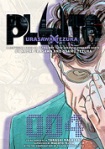





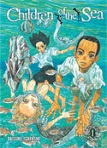




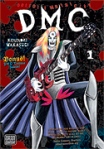

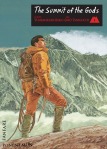



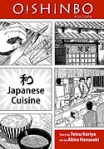

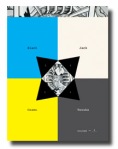

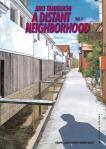
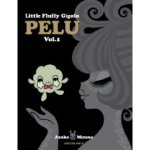
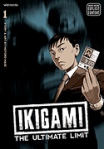
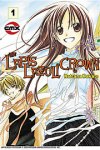
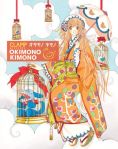 Dark Horse releases
Dark Horse releases  I like Greek Mythology, and I thought George O’Connor’s Journey Into Mohawk Country had a lot of strong points. So I’ll definitely give O’Connor’s
I like Greek Mythology, and I thought George O’Connor’s Journey Into Mohawk Country had a lot of strong points. So I’ll definitely give O’Connor’s 
 I can’t say that Mohiro Kitoh’s
I can’t say that Mohiro Kitoh’s  And now for the new volumes and new editions:
And now for the new volumes and new editions: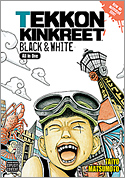 The Comics Reporter notes that
The Comics Reporter notes that 
Upcoming 1/27/2010
Beyond offering some enjoyable and promising material, this week’s ComicList gives me the opportunity to review a couple of likeable titles that I received from the publishers.
Now, on to the rest, though that hardly seems like a fitting phrase for the range and appeal of the items I haven’t yet read.
Last Gasp concludes its admirable effort to release Keiji Nakazawa’s deservedly legendary Barefoot Gen. The ninth and tenth volumes arrive Wednesday. What more do I need to say?
And if you’re curious about this week’s debuts from Tokyopop, tangognat has you covered with reviews of Alice in the Country of Hearts and Portrait of M and N.